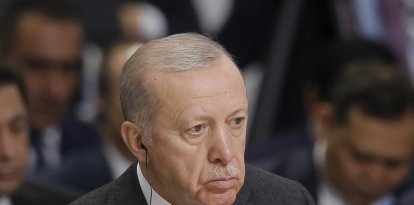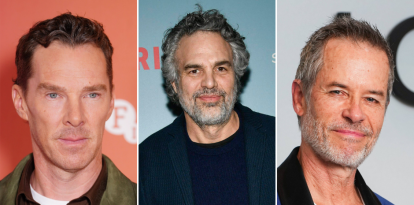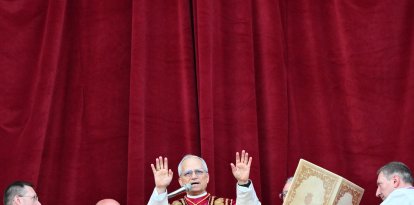Have we learned a lesson from Kristallnacht?
As shocking and scandalous as it may be, what happened on Kristallnacht is not a milestone because of what happened, but because of what began to happen. It was the endorsement and prelude to the Holocaust, the most compelling evidence of how barbarism advances at will.

Kristallnacht
Barely 86 years separate us from Kristallnacht, the key event that allowed Hitler to understand that the world was prepared to tolerate absolutely any aberration. These days mark the anniversary of the events that took place between November 7 and 12, 1938, which marked the fate of 6 million Jews.
On October 28, 1938, more than 17,000 Polish Jews living in Germany were arrested and expelled to Poland with only the clothes on their backs. But Poland had stripped the Polish Jews of their citizenship shortly before and consequently, they were unable to return home and had no means of survival. They were then stranded in limbo between Germany and Poland in the vicinity of the town of Zbaszyn, where a camp of hunger and misery was improvised for the unwanted. Among them was the family of Herschel Grynszpan, a 17-year-old teenager who had gone to seek work in Paris. We are not talking about a small group, but thousands of souls with no food, no home, and no right to move anywhere. All of Europe knew about the situation, including Herschel, who became desperate.
On November 7, 1938, Herschel Grynszpan went to the German embassy in Paris with the idea of threatening Ambassador Johannes von Welczeck, but the latter did not attend to him. Instead he was received by his secretary, Vom Rath, whom Herschel, in a rage, shot at point-blank range, giving Joseph Goebbels the excuse he had long been waiting for: "This is an attack by the Jews on the Germans," ruled the Nazi propaganda minister.
Vom Rath did not die immediately. Throughout November 8, Goebbels instructed the official press to ceaselessly distribute the news of the "Jewish assassination attempt in Paris," which was to be presented as an undisputed Jewish attack on Germany. Legend has it that Hitler sent a trusted doctor to look after the scretary's health, which deteriorated after the envoy's visit...
The next day, like every November 9, the Nazi leadership commemorated the failed coup d'état of 1923, the Beer Hall Putsch. Hitler and top Party officials gathered in Munich for a gala dinner. During the dinner they received the news of Vom Rath's death. Goebbels, as if he had coincidentally had it already prepared, delivered a fiery speech in which he accused the "international Jewish community" of the murder of the German official and said that he would not be surprised if the Germans took the law into their own hands in the face of the murder of a compatriot by a Jew, burning synagogues and destroying businesses.
There is ample and documented evidence that the international community knew what was going on and that the delayed reaction was not ignorance but cowardice or expediency.
While the speech was taking place, attacks and looting were already happening which Goebbels said were spontaneous but "should not be hindered." The message was clear: the Party would not appear publicly as the organizer, but the leaders had called their headquarters to give the relevant instructions. The order Hitler had passed on to Goebbels was to carry out a coordinated and massive attack without the forces wearing uniforms or insignia. Within hours the minister's warning came true and led to a pogrom: a mass lynching that murdered, raped, tortured, looted and set fire to anything that was considered Jewish.
The pogrom was directed against Jews and their property, as well as synagogues throughout the country. The attacks left the streets covered with broken glass from store windows and the windows of Jewish homes. Hundreds of Jews were killed and tortured; and tens of thousands arrested and taken to the concentration camps of Sachsenhausen, Buchenwald and Dachau. More than 1,000 synagogues were burned and Jews were forced to clean up the wreckage and pay for repairs, as the indemnities of the insurance companies were confiscated by Hitler. In addition, the Jewish community was ordered to pay a collective fine as compensation for the murder of Vom Rath.
On November 12, Göring took stock of the pogrom and adopted new measures that deprived the German Jews of the few rights they retained: they were deprived of all trade, forbidden to attend shows, forced to place their savings and jewelry in the possession of the State, and Jewish publications were forbidden. The only way out for them was emigration. But for that, too, they were hindered and left without financial means and with curfews that prevented them from going out for most of the day. By that time, those who had not already fled, realized that they were trapped.
To reach this level of impunity and barbarism, Hitler had taken many steps before, despite the shocking silence of German society and institutions, and the world at large. Criticism of his policies did not last long and did not bring about major changes in political or diplomatic attitudes. Between 1933 and 1939, more than 400 anti-Jewish regulations called the Nuremberg Laws were issued.
The first antisemitic measures were taken in April 1933, two months after the Nazi rise to power. On the first day, Hitler organized a boycott of all Jewish businesses. Within days, Jews were banned from holding public office. In May 1933, public bonfires with books by Jewish authors were held in major university towns. In July, German citizenship was withdrawn from Jews naturalized after the end of World War I. From 1935 onwards, signs prohibiting Jews from entering businesses, clubs, and even entire towns were posted throughout the country.
One such town was Nuremberg, the meeting place of the National Socialist German Workers' Party, known as the Nazi Party. There, on September 15, 1935, during the annual meeting, Hitler established two laws that were key to sentencing Jews: the Reich Citizenship Law and the Law for the Protection of German Blood and Honor.
The Reich Citizenship Law stipulated that "no Jew could be a member of the race, and thus be a German citizen." With this measure, Jewish Germans, including war veterans, who were considered an insurmountable limit to the advance of insanity, lost their nationality and rights. Finally, the Law for the Protection of German Blood and Honor prohibited marriage and sexual relations between Aryans and Jews. It also established who was Jewish based on the number of grandparents and other regulations that curtailed the possibility of socializing with Jews.
But Kristallnacht was the first physical attack of this magnitude. The sheer scale and coordination, the size of the devastation and the lack of national and international opposition constituted a success for Hitler. The absence of criticism gave him the signal that he no longer needed to conceal his policy of eliminating Jews and the road to the Shoah was clear. Before the year was over, World War II had begun.
The Goebbelsian propaganda apparatus is on the march again and its promoters nestle in each and every form in which antisemitism is disguised as progressive do-goodism.
There is ample and documented evidence that the international community knew what was going on and that the late reaction was not due to ignorance but cowardice or convenience. The Central Office for Jewish Immigration, directed by Adolf Eichmann, requested asylum for European Jews based on the persecution to which they were subjected.
After Kristallnacht, Eichmann asked the Cuban government to accept a group of German Jews. On May 13, 1939, 937 Jews from all corners of Germany left the port of Hamburg on the ship St. Louis, bound for the port of Havana. They arrived on May 27, 1939, but were denied asylum in Cuba and two days later were denied asylum in Miami. Various ships carrying Jewish refugees were turned away in many countries even as the Nuremberg Laws were in force and attacks, deportations and imprisonment were becoming more frequent. In 1941, before the United States entered the war, news of mass gassings was already circulating. Humanity chose to remain silent.
Kristallnacht served as a trigger to systematize the internment of the Jewish population in ghettos, the expropriation of their property and the mass deportation to extermination camps. From then on, Hitler did not stop the annihilation of Jews for a second, not even when the defeats in battle required his concentration. It was clear that the world war would not distract him from his main mission. The Jewish question was undoubtedly the most important war front.
As shocking and scandalous as it may be, what happened on Kristallnacht is not a milestone because of what happened, but because of what began to happen. It was the endorsement and prelude to the Holocaust, the most compelling evidence of how barbarism advances at will when the cowardly and complacent of the world remain in expectation, thinking that evil withdraws on its own and that worse things cannot happen.
The Jewish community and the people of Israel have been under increasingly fierce attacks and blockades since the October 7 massacre. Not even a century has passed since the Shoah. The Goebbelsian propaganda machine is back in motion and its promoters nest in each and every one of the forms in which antisemitism is disguised as progressive do-goodism. There are clear signs, the indications are clear. Humanity is, once again, duped.
"For evil to triumph, it is enough for good men to do nothing."

























